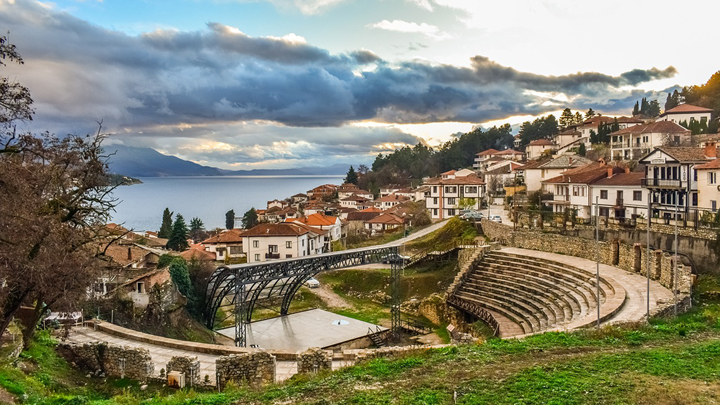
Ohrid is one of those towns that is not usually well known worldwide, although it is a true Macedonian treasure, which well deserves to be chosen as a destination for sightseeing or enjoying a few days off . This town, which is located on the border with Albania, is a must-see when visiting North Macedonia. History, religion, art and a spectacular environment are some of its main attractions.
The location
Ohrid was a town that had great significance in ancient times. Not for nothing was it a center of cultural and religious diffusion for the Slavic world, beginning its rise in the 7th century.
It was precisely in this town that the first Slavic university in the Balkans was built and the oldest monastery in the Slavic world was also established. It is the San Pantaleón.
Its historic center is striking for its narrow streets that are lined with restaurants and cafes. A good walk can be done by going around the lake to see its pebble shore.

The town has emblematic monuments such as the churches among which Santa Sofia stands out, as well as the Church of the Mother of God Perivlepta or that of Stevi Jovan from the 13th century. The Samouil fortress , which is at the top dominating the city, is another of the great attractions.
Nature
Apart from these milestones in its history, Ohrid deserves to be visited also for its natural environment , which has great beauty . For many it is the most beautiful place in all of Macedonia, in addition to being considered one of the most spectacular enclaves in Europe.
And all this thanks to its lake , which looks like a sea because it is 30 kilometers long and 300 meters deep. In addition, its waters are very clean and transparent, producing an attractive contrast with the mountainous environment .
Nature lovers can enjoy unique species from this area such as the plasica fish , whose scales are used to make the Ohrid pearl , which is a jewel that is produced with a secret method that is passed down from generation to generation.
